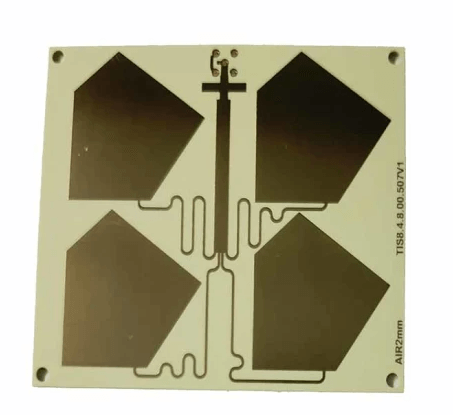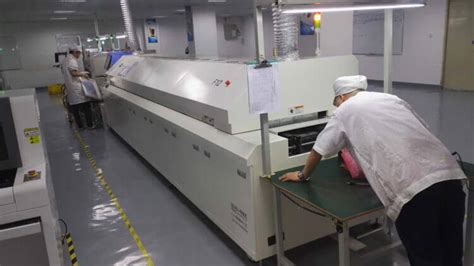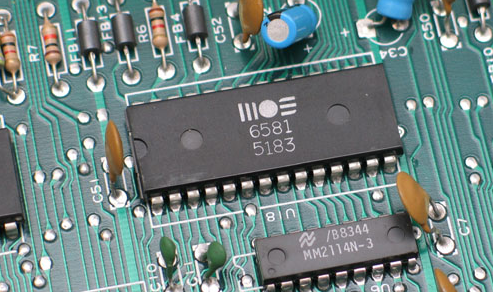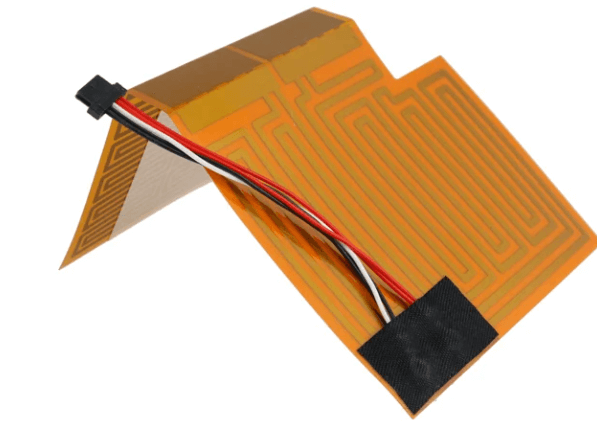Rogers 4350 pcb
Advantages Of Using Rogers 4350 PCB In High-Frequency Applications
Rogers 4350 PCB, a high-frequency laminate material, has garnered significant attention in the electronics industry due to its exceptional performance characteristics. One of the primary advantages of using Rogers 4350 PCB in high-frequency applications is its low dielectric constant (Dk).
This property ensures minimal signal loss and distortion, which is crucial for maintaining signal integrity in high-speed circuits. Consequently, devices that rely on precise signal transmission, such as RF and microwave communication systems, benefit immensely from the use of Rogers 4350 PCB.
In addition to its low dielectric constant, Rogers 4350 PCB exhibits a low dissipation factor (Df).
This attribute is particularly important in high-frequency applications where energy loss can lead to inefficiencies and reduced performance. The low dissipation factor of Rogers 4350 PCB minimizes energy loss, thereby enhancing the overall efficiency and reliability of the electronic device. This makes it an ideal choice for applications that demand high performance and long-term stability.
Moreover, Rogers 4350 PCB offers excellent thermal management properties.
High-frequency applications often generate significant amounts of heat, which can adversely affect the performance and lifespan of electronic components. The thermal conductivity of Rogers 4350 PCB ensures efficient heat dissipation, thereby preventing overheating and maintaining optimal operating conditions. This thermal stability is essential for applications such as power amplifiers and radar systems, where consistent performance is critical.
Another notable advantage of Rogers 4350 PCB is its dimensional stability.
High-frequency circuits require precise and consistent dimensions to function correctly. Any variation in the dimensions can lead to signal degradation and performance issues. Rogers 4350 PCB maintains its dimensions even under varying environmental conditions, ensuring reliable performance. This stability is particularly beneficial in applications that operate in harsh environments, such as aerospace and military systems.
Furthermore, the ease of fabrication associated with Rogers 4350 PCB cannot be overlooked.
The material is compatible with standard PCB manufacturing processes, which simplifies the production and reduces costs. This compatibility allows manufacturers to leverage existing infrastructure and expertise, thereby streamlining the production process. Additionally, the material’s robustness ensures that it can withstand the rigors of manufacturing without compromising its performance characteristics.
The versatility of Rogers 4350 PCB also extends to its compatibility with various surface finishes.
This flexibility allows designers to choose the most suitable finish for their specific application, further enhancing the performance and reliability of the final product. Whether it is for gold, silver, or other finishes, Rogers 4350 PCB provides a reliable substrate that meets the stringent requirements of high-frequency applications.
In conclusion, the advantages of using Rogers 4350 PCB in high-frequency applications are manifold. Its low dielectric constant and dissipation factor ensure minimal signal loss and energy efficiency, while its excellent thermal management properties prevent overheating. The material’s dimensional stability guarantees reliable performance in varying conditions, and its ease of fabrication and compatibility with various surface finishes make it a versatile choice for manufacturers. These attributes collectively make Rogers 4350 PCB an indispensable material for high-frequency applications, ensuring optimal performance, reliability, and efficiency in a wide range of electronic devices.
Design Tips For Optimizing Performance With Rogers 4350 PCB
When designing printed circuit boards (PCBs) for high-frequency applications, the choice of substrate material is crucial. Rogers 4350, a high-frequency laminate, is often the material of choice due to its excellent electrical properties and mechanical stability. To optimize performance with Rogers 4350 PCB, several design considerations must be taken into account, ensuring that the final product meets the desired specifications and operates efficiently.
First and foremost, understanding the dielectric properties of Rogers 4350 is essential.
This material boasts a low dielectric constant (Dk) and low dissipation factor (Df), which are critical for minimizing signal loss and maintaining signal integrity at high frequencies. By leveraging these properties, designers can achieve superior performance in applications such as RF and microwave circuits. However, to fully exploit these benefits, careful attention must be paid to the layout and spacing of the traces.
Trace width and spacing are pivotal factors in high-frequency PCB design.
With Rogers 4350, it is imperative to maintain consistent trace widths to ensure uniform impedance. Variations in trace width can lead to impedance mismatches, resulting in signal reflections and potential data loss. Additionally, the spacing between traces should be optimized to minimize crosstalk and electromagnetic interference (EMI). Utilizing controlled impedance design techniques can help achieve the desired signal integrity, especially in high-speed digital and RF circuits.
Another critical aspect is the choice of via structures.
Vias, which connect different layers of a PCB, can introduce parasitic inductance and capacitance, adversely affecting high-frequency performance. To mitigate these effects, designers should consider using blind or buried vias, which do not pass through the entire board, thereby reducing unwanted parasitic elements. Furthermore, via stitching around high-frequency components can help in maintaining a low-inductance ground path, enhancing overall signal integrity.
Thermal management is another key consideration when working with Rogers 4350 PCBs.
High-frequency circuits often generate significant heat, which can impact performance and reliability. Effective thermal management strategies, such as the use of thermal vias and heat sinks, are essential to dissipate heat efficiently. Additionally, the thermal conductivity of Rogers 4350 should be factored into the design to ensure that heat is adequately managed without compromising the electrical performance.
The choice of solder mask and surface finish also plays a role in optimizing performance.
Rogers 4350 is compatible with various surface finishes, including ENIG (Electroless Nickel Immersion Gold) and HASL (Hot Air Solder Leveling). However, the choice of finish can impact the insertion loss and overall signal integrity. ENIG, for instance, provides a smooth surface and excellent planarity, making it suitable for high-frequency applications. On the other hand, the solder mask should be carefully selected to avoid any adverse effects on the dielectric properties of the laminate.
Finally, simulation and testing are indispensable in the design process.
Utilizing advanced simulation tools can help predict the behavior of high-frequency circuits and identify potential issues before fabrication. Post-fabrication testing, including time-domain reflectometry (TDR) and vector network analysis (VNA), can validate the design and ensure that the PCB meets the required performance standards.
In conclusion, optimizing performance with Rogers 4350 PCB involves a comprehensive approach that encompasses material properties, trace design, via structures, thermal management, and surface finishes. By meticulously addressing these factors, designers can harness the full potential of Rogers 4350, achieving high-performance, reliable PCBs for demanding high-frequency applications.

Comparing Rogers 4350 PCB To Other High-Frequency Materials
Rogers 4350 PCB is a high-frequency laminate material that has garnered significant attention in the electronics industry due to its exceptional performance characteristics. When comparing Rogers 4350 PCB to other high-frequency materials, several key factors come into play, including dielectric constant, thermal management, and cost-effectiveness. Understanding these differences is crucial for engineers and designers who aim to optimize their electronic designs for specific applications.
One of the primary attributes that set Rogers 4350 PCB apart from other high-frequency materials is its dielectric constant (Dk).
The dielectric constant of a material is a measure of its ability to store electrical energy in an electric field. Rogers 4350 PCB boasts a stable dielectric constant of approximately 3.48, which is relatively low compared to other high-frequency materials. This stability is maintained over a wide range of frequencies and temperatures, making it an ideal choice for applications that require consistent performance, such as RF and microwave circuits. In contrast, other materials like FR-4, which is commonly used in standard PCBs, have a higher and less stable dielectric constant, leading to potential signal integrity issues at high frequencies.
Thermal management is another critical aspect where Rogers 4350 PCB excels.
High-frequency applications often generate significant amounts of heat, and effective thermal management is essential to ensure the reliability and longevity of the electronic components. Rogers 4350 PCB has a low coefficient of thermal expansion (CTE), which means it expands and contracts less with temperature changes compared to other materials.
This property reduces the risk of mechanical stress and potential failure of the PCB and its components. Additionally, Rogers 4350 PCB has excellent thermal conductivity, allowing for efficient heat dissipation. In comparison, materials like PTFE (polytetrafluoroethylene) laminates, while also used in high-frequency applications, may have higher CTE values and lower thermal conductivity, posing challenges in thermal management.
Cost-effectiveness is a significant consideration when selecting materials for high-frequency applications.
While Rogers 4350 PCB offers superior performance characteristics, it is generally more expensive than standard materials like FR-4. However, when compared to other high-frequency materials such as PTFE-based laminates, Rogers 4350 PCB often presents a more cost-effective solution. PTFE laminates, known for their excellent electrical properties, tend to be more costly due to their complex manufacturing processes and material costs. Therefore, Rogers 4350 PCB strikes a balance between performance and cost, making it an attractive option for many high-frequency applications.
Moreover, the manufacturability of Rogers 4350 PCB is another advantage worth noting.
The material is compatible with standard PCB fabrication processes, which means it can be processed using conventional equipment and techniques. This compatibility reduces the need for specialized manufacturing processes, thereby lowering production costs and lead times. In contrast, some high-frequency materials may require unique processing methods, adding complexity and expense to the manufacturing process.
In conclusion, Rogers 4350 PCB stands out among high-frequency materials due to its stable dielectric constant, superior thermal management properties, cost-effectiveness, and ease of manufacturability. These attributes make it a preferred choice for engineers and designers working on RF and microwave circuits, where performance and reliability are paramount. While other materials like FR-4 and PTFE laminates have their own advantages, Rogers 4350 PCB offers a well-rounded solution that meets the demanding requirements of high-frequency applications.

Manufacturing Challenges And Solutions For Rogers 4350 PCB
Rogers 4350 PCB, a high-frequency laminate material, is widely recognized for its superior performance in radio frequency (RF) and microwave applications. However, manufacturing printed circuit boards (PCBs) using Rogers 4350 presents several challenges that require specialized solutions to ensure optimal functionality and reliability. Understanding these challenges and the corresponding solutions is crucial for manufacturers aiming to leverage the benefits of Rogers 4350 in their designs.
One of the primary challenges in manufacturing Rogers 4350 PCBs is the material’s unique properties, which differ significantly from traditional FR-4 laminates.
Rogers 4350 has a lower dielectric constant and dissipation factor, which are advantageous for high-frequency applications but necessitate precise control during the fabrication process. The material’s thermal properties also differ, with a higher coefficient of thermal expansion (CTE) in the z-axis. This discrepancy can lead to issues such as delamination or misalignment during thermal cycling if not properly managed.
To address these challenges, manufacturers must employ specialized techniques and equipment.
For instance, the drilling process for Rogers 4350 requires careful consideration due to the material’s hardness and brittleness. Standard drilling parameters used for FR-4 can result in rough hole walls and excessive tool wear. Therefore, manufacturers often use diamond-coated drill bits and adjust spindle speeds and feed rates to achieve clean, precise holes. Additionally, deburring processes must be meticulously controlled to prevent damage to the laminate.
Another significant challenge is the adhesion of copper to the Rogers 4350 substrate.
The material’s surface energy is lower than that of FR-4, making it more difficult to achieve a strong bond. To enhance adhesion, manufacturers typically employ a multi-step process that includes surface roughening, chemical treatments, and the use of specialized bonding films. These steps help to create a more receptive surface for copper plating, ensuring robust adhesion and reliable electrical performance.
Thermal management is also a critical consideration when working with Rogers 4350 PCBs.
The material’s higher CTE can lead to mechanical stress during thermal cycling, potentially causing cracks or delamination. To mitigate these risks, manufacturers often incorporate thermal vias and heat sinks into the PCB design. These features help to dissipate heat more effectively, reducing thermal stress and enhancing the overall reliability of the board.
Furthermore, the lamination process for Rogers 4350 requires precise temperature and pressure control.
The material’s sensitivity to thermal expansion means that even slight deviations can result in warping or misalignment. Manufacturers must use advanced lamination equipment capable of maintaining consistent conditions throughout the process. Additionally, careful monitoring and quality control measures are essential to ensure that each layer is properly aligned and bonded.
In conclusion, while manufacturing Rogers 4350 PCBs presents several challenges, these can be effectively managed through specialized techniques and equipment. By understanding the material’s unique properties and implementing appropriate solutions, manufacturers can produce high-performance PCBs that meet the demanding requirements of RF and microwave applications. The key to success lies in meticulous attention to detail and a commitment to quality at every stage of the fabrication process.






